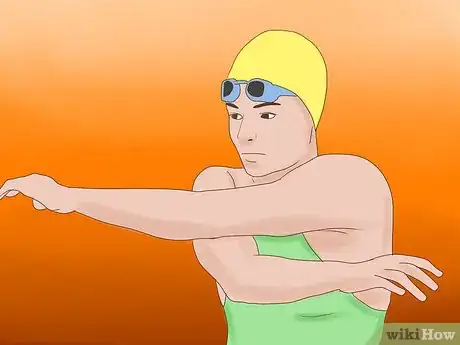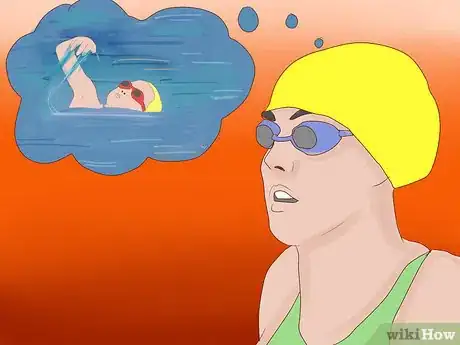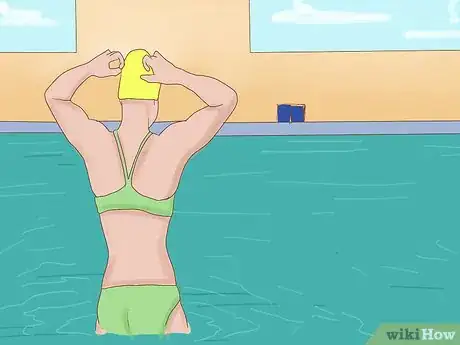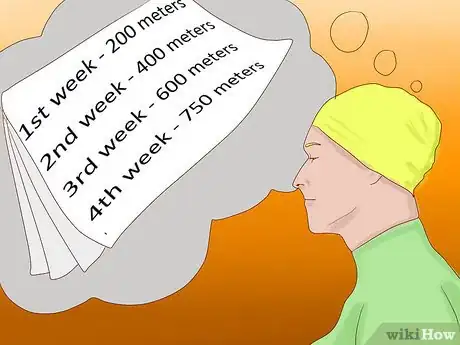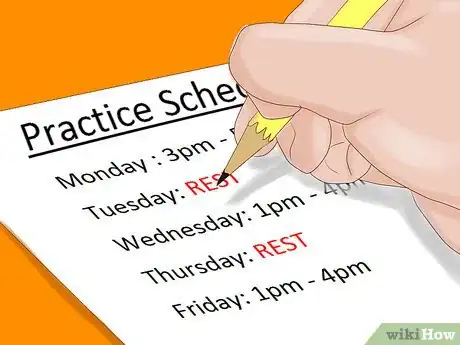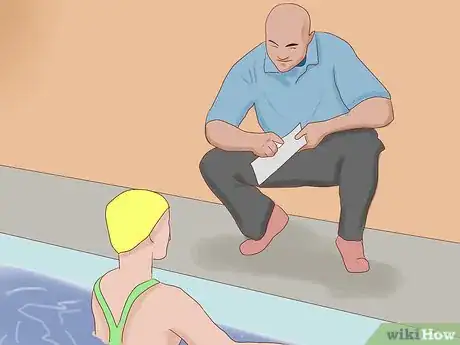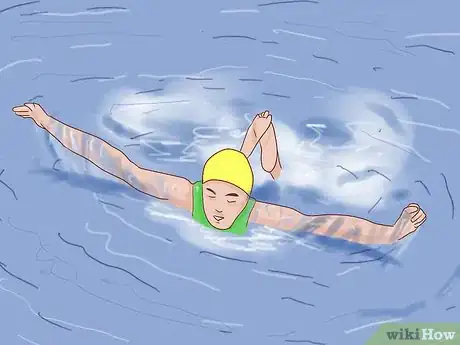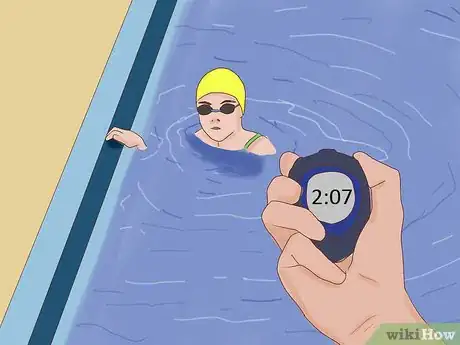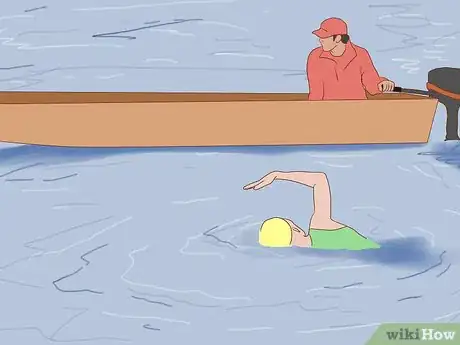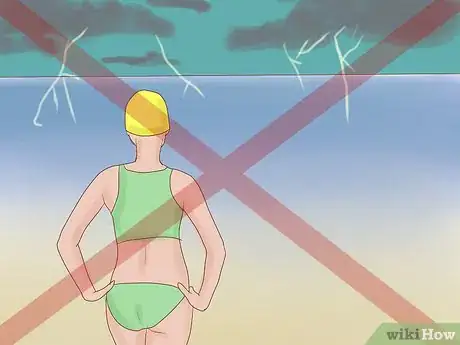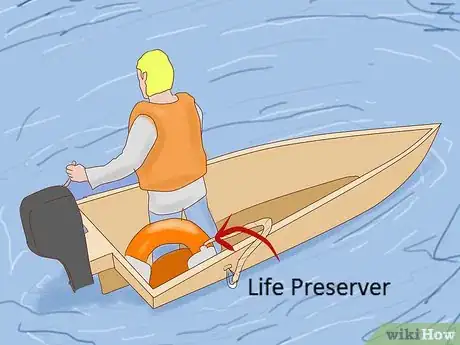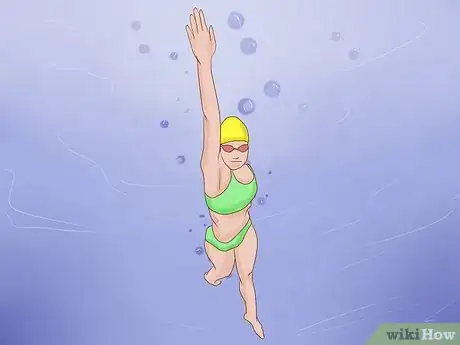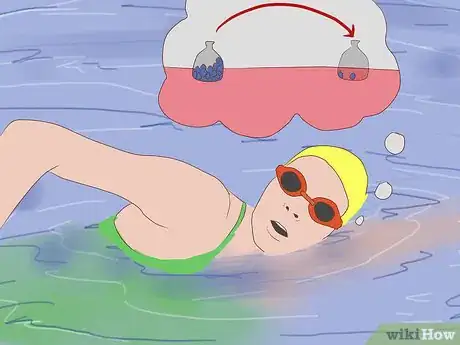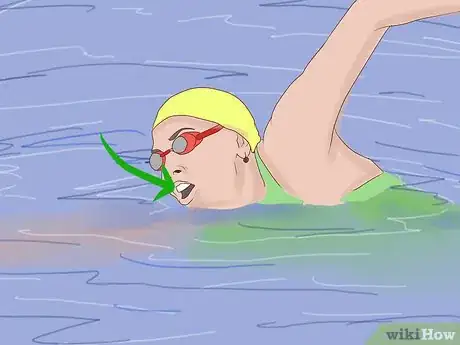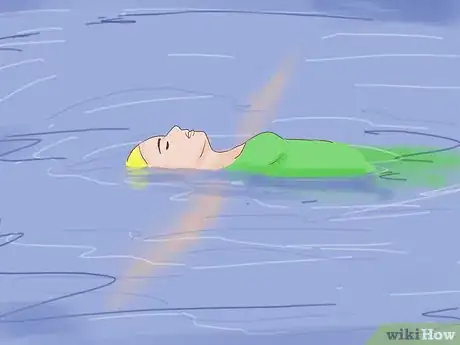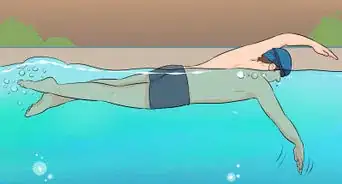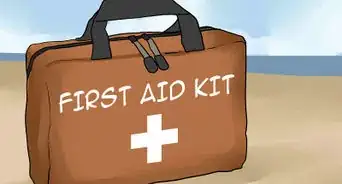X
wikiHow is a “wiki,” similar to Wikipedia, which means that many of our articles are co-written by multiple authors. To create this article, 17 people, some anonymous, worked to edit and improve it over time.
This article has been viewed 31,271 times.
Learn more...
Swimming long distance can be a real challenge, especially in open water. To succeed, you will need a lot of practice and support, and you will need to develop your breathing, pace, and endurance.
Steps
Part 1
Part 1 of 3:
Preparing to Swim
-
1Loosen and warm your muscles before you swim.
-
2Decide what stroke you want to focus on. For most long distance competition, freestyle (front crawl) and breaststroke are preferred.Advertisement
-
3Test your ability and set goals for improvement. Go to the pool and swim as much as you can at one time. This will help you set a goal.
-
4Plan how much you want to improve each day, week and month. Keep it reasonable. Gradual improvement is the best for the long haul. With a plan for gradual improvement, you will not feel overwhelmed and quit or tax your body beyond what it can reasonably take on.
-
5Establish a workout schedule. You should practice a minimum of three times each week and should have an established routine for each session.
-
6Improve your swimming stroke(s). Consider hiring a coach, or asking a friend who knows about swimming to critique your stroke. Attempting to swim with a rough stroke can be difficult and frustrating. Smoothing your technique will pay dividends: You will swim longer distances with less effort and will be able to stay in the water longer and have more enjoyment while doing so.
-
7Work towards ideal form gradually as well as to improve your conditioning. Your stroke will get better and more personalized as you practice.
-
8Build your stamina. Gradually increase the length and variety of your swim routines.
-
9Swim with a friend. This can help with motivation, goal setting, and technique.
-
10Time your swim speed. Many public pools will have a swim clock within easy view of the pool, but if yours does not, ask a friend or family member to time your laps.
Advertisement
Part 2
Part 2 of 3:
Making Open Water Considerations
-
1Never swim alone. Always communicate your plans to your companion(s).
-
2Assess environmental conditions before you enter the water and as you swim. If you are swimming outside, be aware of impending storms, water temperature, currents, and lake or sea creatures. If it seems unsafe, do not enter the water.
-
3Make provisions for a companion boat. Ensure that it is equipped with tethered life preservers and knowledgeable boat operators.
-
4Prepare rest and emergency strokes. These should be considered essential.
- A rest stroke will allow you to add distance to your swim while the muscles used for your primary stroke recover.
- Develop a comfortable stroke that you can switch to in emergencies, one that you can do for a very long time with little effort. Be ready to switch immediately to this stroke should you become exhausted or panicky. Relax and continue the stroke until you regain composure and energy. During this period, go across the currents until you have reached calmer water.
Advertisement
Part 3
Part 3 of 3:
Staying Safe While Swimming
-
1Follow your instructor's advice.
-
2Maintain good head position and overall technique. Many swimmers get themselves into trouble by relaxing too much and letting their stroke become lazy. This makes any distance difficult.
-
3Take your mind off the distance. Distracting yourself from the distance you are actually swimming can help if you do not have to keep track of how far you have gone or how fast you are swimming.
- One method of doing this is to "count" your laps by moving small pebbles or marbles from one container to the other... one per lap. If you count out the marbles/pebbles/objects beforehand, you will not need to keep count while swimming. You'll just be done when all the marbles or pebbles are transferred from one container to the other at the end of the pool.
- Waterproof MP3 players are available for reasonable prices (less than $30 USD). These can help distract you from the distance and/or help you set a pace and rhythm.
-
4Focus on your breathing. Breathe to a rhythm that works for you personally, whether it is every three strokes (arguably the best rhythm) or every stroke. Do not hold your breath for longer than you have prepared for.
-
5Know when you need to rest. Do not over exert yourself to the point of fatigue, especially in open water, as this can quickly become dangerous.
-
6Recover after each swim. When you come out of the water, rest and be sure to drink water. You need to hydrate or you can get very sick.
Advertisement
Community Q&A
-
QuestionHow much time will it take to learn the basics?
 Community AnswerIf you commit to it, it won't take long. Practice every day and try to work with a coach.
Community AnswerIf you commit to it, it won't take long. Practice every day and try to work with a coach. -
QuestionHow can I keep a good pace when I'm kind of overweight?
 Community AnswerYou just have to keep going. The more you practice, the faster you will get, and you'll likely lose weight in the process.
Community AnswerYou just have to keep going. The more you practice, the faster you will get, and you'll likely lose weight in the process. -
QuestionAre female swimmers really better at long distance swimming because they don't get as cold in the water as men and boys do?
 Community AnswerBoys and girls are the same. If you want to swim long distance, you have to practice and work hard for it. You become more acclimated to the cold water the more frequently you swim, it doesn't matter if you're male or female.
Community AnswerBoys and girls are the same. If you want to swim long distance, you have to practice and work hard for it. You become more acclimated to the cold water the more frequently you swim, it doesn't matter if you're male or female.
Advertisement
Warnings
- Each method needs to be tried by the individual person prior to entering competition.⧼thumbs_response⧽
Advertisement
About This Article
Advertisement
